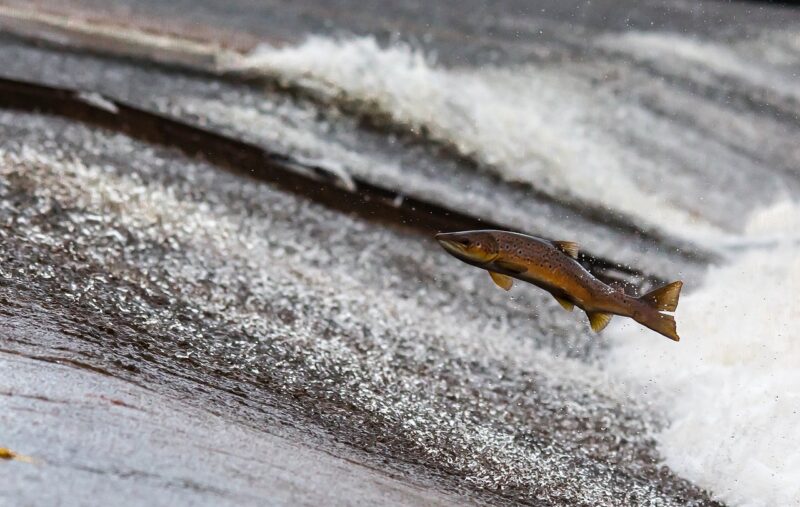The Remarkable Journey of Salmon and Other Migratory Fish in River Ecosystems
November 14, 2024

Migratory fish, such as salmon, are incredible creatures that undertake remarkable journeys within river ecosystems, demonstrating nature’s awe-inspiring cycles of life. These fascinating adventures not only serve as a testament to the resilience and adaptability of these species, but they also play vital roles in the health of freshwater ecosystems and the overall biodiversity of our planet.
1. Understanding Migration: The Life Cycle of Salmon
Salmon migration is a deeply intricate process that begins with spawning in freshwater rivers. The two most well-known species of salmon — the Chinook and the Coho — have life cycles that exemplify this journey. These species hatch in freshwater, migrate to the ocean for several years, and then return to their birthplace to spawn.
– Egg Stage: The cycle begins when female salmon lay eggs in gravel nests known as redds, typically in cold, clean streams.
– Alevin Stage: After a few weeks, the eggs hatch into alevins, which are small fish that remain in the gravel while they absorb their yolk sacs.
– Fry Stage: Once they are fully developed, the alevins become fry and leave the nest to begin their journey downstream to the ocean.
– Smolt Stage: As they reach brackish waters, they undergo a transformation known as smoltification, adapting to saltwater by changing their physiology.
– Adult Stage: After spending 1 to 5 years in the ocean, the adult salmon return to their natal rivers, navigating currents and overcoming obstacles to reach their spawning grounds.
This incredible journey can cover thousands of miles, and salmon are known for their remarkable ability to return to the very streams where they were born, guided by their sense of smell.
2. The Role of Other Migratory Fish in River Ecosystems
While salmon are arguably the most famous migratory fish, many other species also play crucial roles in river ecosystems. Examples include:
– Eels: European eels migrate from freshwater rivers to the Sargasso Sea for spawning. Their long migratory paths can be remarkably difficult, as they swim thousands of kilometers through various aquatic environments.
– Sturgeon: Known for their unique spawning migrations, sturgeon fish can travel hundreds of kilometers upstream to lay their eggs in suitable locations, contributing to the genetic diversity of the species.
– Lampreys: These ancient fish breed in freshwater streams. After their larval stage, they migrate downstream to the ocean, coming back to spawn, thus sustaining the cycle of life.
Each of these species contributes to their ecosystems in unique ways, from nutrient cycling to providing food sources for predators, thus maintaining the balance within these aquatic communities.
3. Migration Challenges: Barriers and Threats
Unfortunately, migratory fish face numerous challenges that threaten their journeys. Human activities have created various barriers to migration:
– Dams: These structures, while important for energy and water supply, obstruct fish from reaching their spawning grounds, leading to population declines.
– Pollution: Contaminated waters can decay the habitats crucial for breeding and reduce overall fish health.
– Climate Change: Altered water temperatures and flow patterns caused by climate change can affect migration timings and the availability of suitable spawning habitats.
– Overfishing: Unsustainable fishing practices can deplete populations, struggling even more in navigating altered environments with fewer food sources.
Conservation efforts aim to restore river habitats, improve fish passage around dams, and regulate fishing practices to ensure these amazing migratory journeys can continue.
4. The Importance of Migratory Fish to Ecosystem Health
The migration of fish, particularly salmon, has profound impacts on the health of river ecosystems.
– Nutrient Cycling: As salmon migrate upstream, they transport marine-derived nutrients to freshwater ecosystems through their bodies. When they spawn and die, their decomposing bodies enrich the soil and water, benefiting both plants and other aquatic organisms.
– Food Web Dynamics: These migratory patterns create diverse food webs. Young salmon provide an essential food source for wildlife, including bears, birds, and humans. A healthy population of migratory fish supports the entire ecosystem.
– Biodiversity: The varied reproductive strategies deployed by migratory fish, like varying spawning times and locations, help maintain genetic diversity, ensuring populations can adapt and thrive amidst environmental changes.
Understanding and protecting migratory fish is crucial for preserving the biodiversity and health of our river ecosystems, making them integral components of our natural environment.
5. Conservation Initiatives and Future Perspectives
Dedicated efforts are underway globally to restore river ecosystems and bolster migratory fish populations.
– Dam Removal: Many organizations advocate for the removal of obsolete dams, restoring natural river flow and access to spawning grounds.
– Fish Ladders: Constructed to help fish bypass obstacles, these structures can allow salmon and other species to migrate upstream more easily.
– Restoration Projects: Initiatives to restore habitat connectivity, remove barriers, and enhance water quality are underway in many regions.
– Public Awareness: Raising awareness about the importance of migratory fish and their roles in ecosystems encourages community involvement and stakeholder collaboration in conservation efforts.
In summary, the journey of migratory fish is not merely a story of survival but a pivotal aspect of our ecosystem’s health. Through understanding the challenges these species face, we can take action to protect them, ensuring their remarkable journeys continue for generations to come.
Conclusion
The lives of migratory fish like salmon, eels, and sturgeon are filled with awe-inspiring journeys, driven by the instinct to reproduce and sustain their species. These migrations sustain the biodiversity and health of river ecosystems, highlighting the intricate connections within our natural world. Protecting these entities should be a priority, as their existence holds the key to many ecological functions, ensuring that future generations can enjoy the beauty and richness of our planet’s rivers and the life within them.







